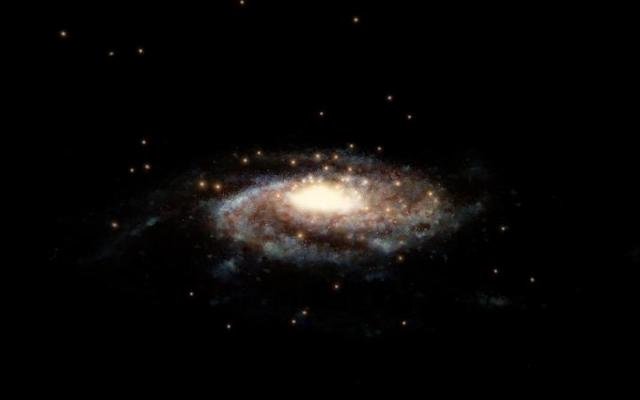
A new study has shown the mass of the Milky Way: 1.5 trillion solar masses.
The finding is from the measurements from the NASA/ESA Hubble Space Telescope and the ESA Gaia mission.
The mass of the Milky Way is one of the most important measurements in astronomy.
However, due to limitations of technology, previous estimates of the Milky Way’s mass disagree wildly.
For example, previously scientists estimated the mass of the Milky way may range from 500 billion to 3 trillion times the mass of the Sun.
The big uncertainty is due to the different methods used for measuring the distribution of dark matter.
Dark matter makes up about 90% of the mass of the galaxy, and it cannot be detected directly.
In the present study, the researchers combined combining data from the European Space Agency (ESA) Gaia mission with data from the NASA/ESA Hubble Space Telescope.
Gaia is an ambitious mission to chart a 3D map of the Milky Way, and it aims to show the composition, formation, and evolution of the Galaxy.
It provides unprecedented positional and radial velocity measurements with the accuracies.
Scientists need the data to produce a stereoscopic and kinematic census of about one billion stars in Milky Way and throughout the Local Group.
The data from Hubble allowed faint and distant globular clusters, as far as 130 000 light-years from Earth, to be added to the study.
They used a clever method to weigh the Milky Way. The method relied on measuring the velocities of globular clusters.
The more massive a galaxy, the faster its clusters move under the pull of its gravity.
The team already know the speed at which a cluster is approaching or receding from Earth. They also measured the sideways motion of the clusters.
Based on the data, they calculated the total velocity and the galactic mass.
The team found the Milky Way weighs in at about 1.5 trillion solar masses within a radius of 129 000 light-years from the galactic center.
The team feels they are lucky to have such a great combination of data. Without these two space telescopes, it is impossible to accurately estimate the Milky Way’s mass.
The new finding may help answer a lot of cosmological questions.
One study leader is Laura Watkins from European Southern Observatory, Germany.
Copyright © 2019 Knowridge Science Report. All rights reserved.



